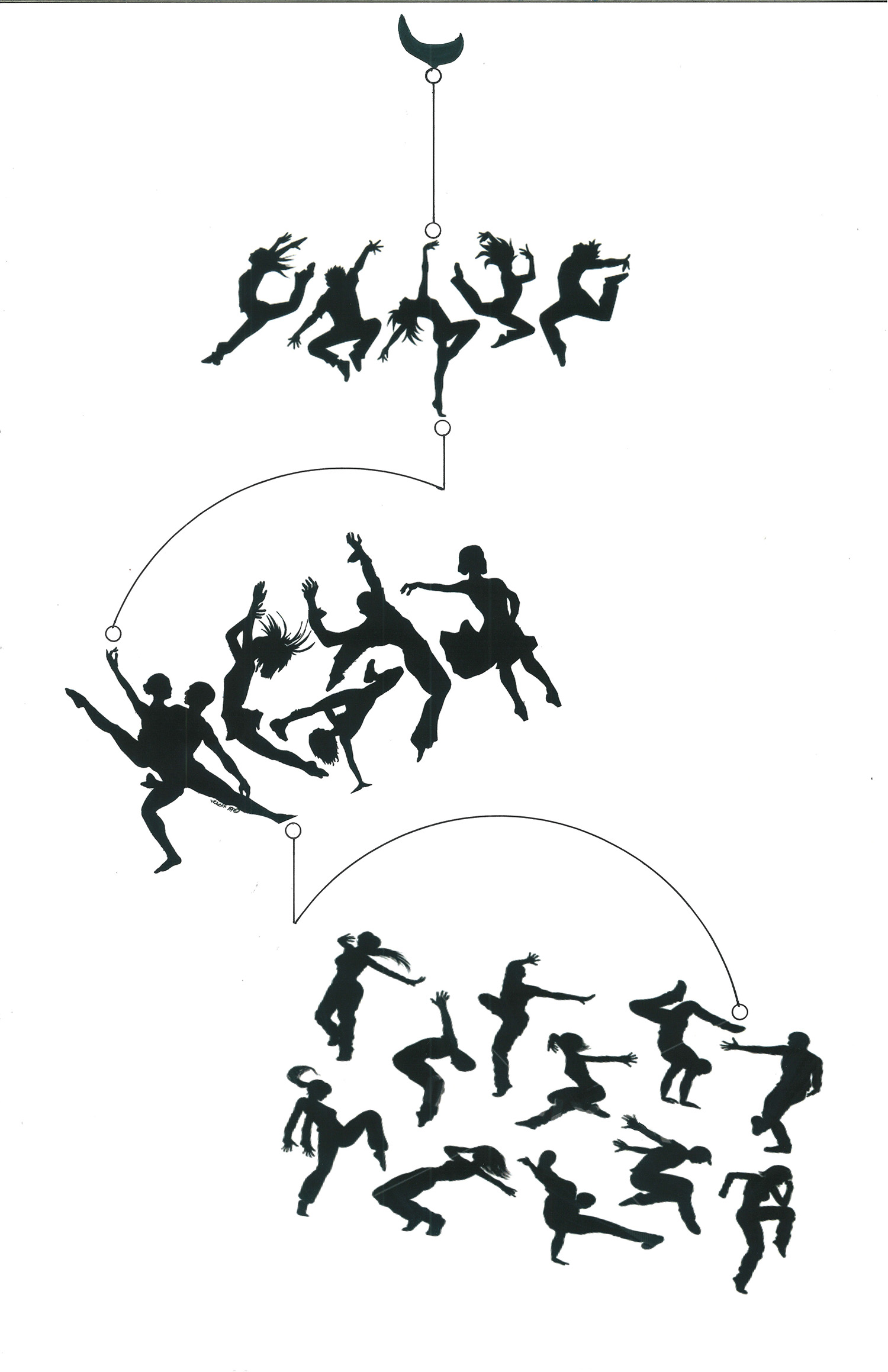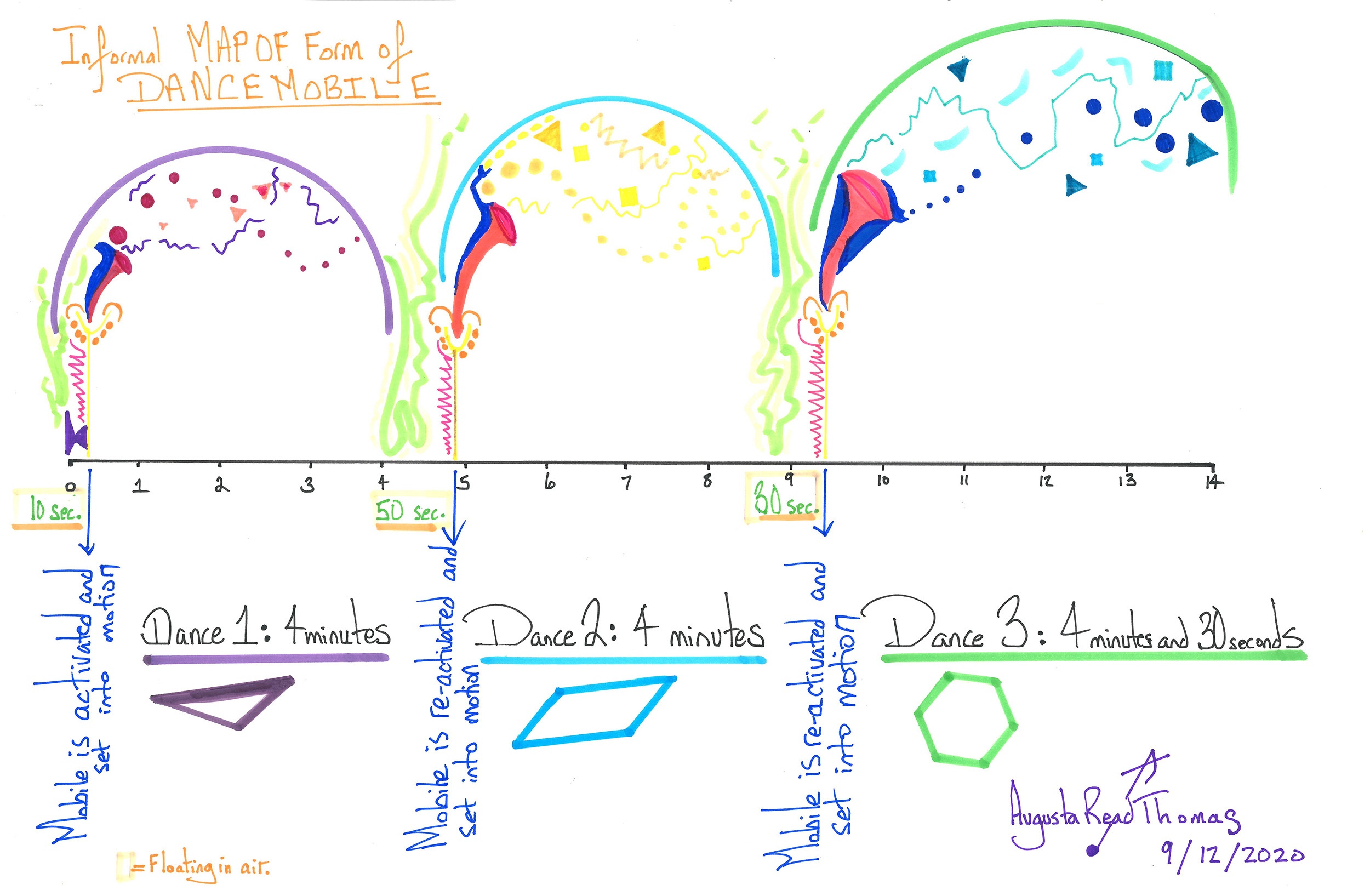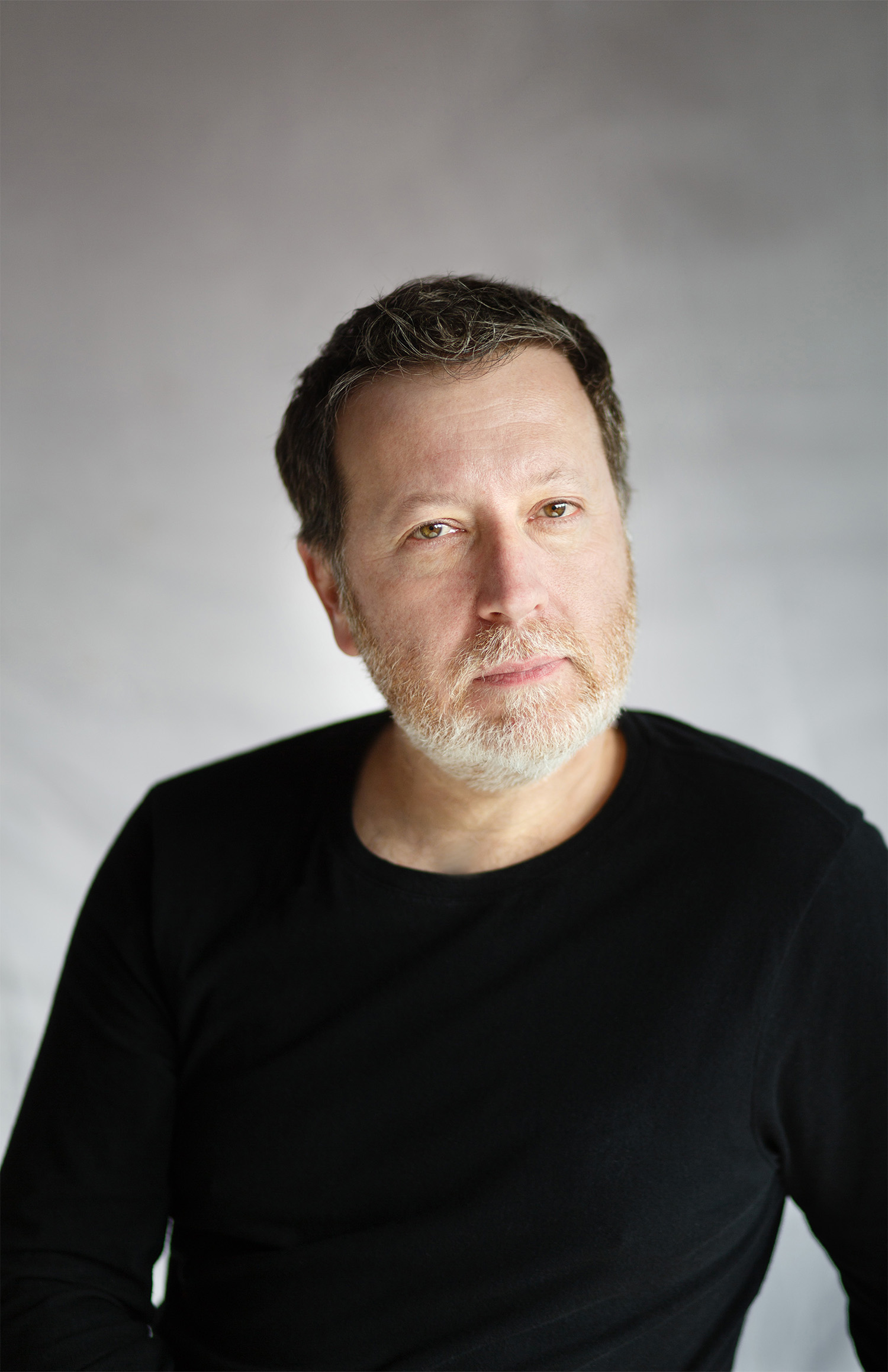Fl. (picc.) Cl. Alto Sax (sop sax.)(or Cl.*) Bsn (or B.Cl.**). Tbn. Pno. 3 (or 2***) perc.
Strings (11111 or 3,3,3,3,1 or 33333 or approx 66543 players****)
* In the case where Saxophone is not available, then the Alto saxophone (doubling soprano saxophone) part can be played on Bb clarinet. There is only one score and set of parts which incorporates all versions. For example, in individual parts, whenever there is a saxophone cue it is marked "Sax. (or Cl. 2)” Sax/cl 2 parts are labeled 3a & 3b.
**In the case where bassoon is substituted with bass clarinet, the player can opt to tacet the occasional low note that the player feels does not sound satisfactory on their instrument. Bassoon/Bass Clarinet part’s range is Bb1 to D#5. Publisher has a bass clarinet in Bb version of this partition. The bassoon/alternate bass cl parts are labeled 4a & 4b.
***There are three percussion parts. The Percussion III part plays all of the marimba music (which music is also listed in the other two percussion parts.) In case a third player is not available to play the marimba, the composition has been performed with only two players, though it is very strongly recommended to have three percussionists, not two.
****In the case where a string section is used instead of 5 solo string players, some of the double-stops are played Divisi. These are all notated in the score and parts. If 5 solo strings are being used, it is optional to use subtle, elegant amplification on them, the bass in particular.
First performance by Eastman Musica Nova, Brad Lubman conducting, 2 March 2022. Commissioned by the Howard Hanson Institute for American Music in Celebration of the 100th Anniversary of the Eastman School of Music.
Chicago premiere by the Grossman Ensemble and special guests, Stefan Asbury conducting 1 October 2022, Chicago.
Asian Premiere by members of the Hong Kong Philharmonic Peter Biloen, conducting, 25 September 2022 as presented by the Cosmopolis Festival for the inaugural season of the new concert hall, the Shaw Auditorium.
New York City premiere by the Ensemble Signal, Brad Lubman conducting, presented by TIME:SPANS FESTIVAL, Thomas Fichter, Festival director, on 15 August 2023 at the at DiMenna Center in Manhattan.
European premiere by the Ensemble Kontrapunkte, Gottfried Rabl conducting, on 8 April 2024 in the Musikverein Gläserner Saal / Magna Auditorium in Vienna, Austria.
Duration: 14 minutes or 9 minutes and 20 seconds.
For the 9 minute and 20 second version: you may omit Dance #2. If you opt to do so: Play measures 1-166; then cut out measures 167-328; then reenter in measure 329, which is the second bar of Dance #3. In measure 329 the piano should not play the tied-over high G.
Members of the Grossman Ensemble and guest artists perform "Dance Mobile (in memoriam Oliver Knussen)" by CCCC Director and Founder Augusta Read Thomas on October 1, 2022 at the University of Chicago's Logan Center for the Arts in Chicago, IL.
Informal reference recording
Live concert VIDEO and audio recording from World Premiere is available for archival purposes only and for private listening. If you would like to review the recording please contact Augusta.
Music for me is an embrace of the world – a way to open myself up to being alive in the world in my body, in my sounds, and in my mind. I care deeply about musicality, imagination, craft, clarity, dimensionality, an elegant balance between material and form, and empathy with the performing musicians.
My works always spark and catch fire from spontaneous improvisations. It is music always in the act of becoming. I have a vivid sense that the process of the creative journey (rather than a predictable fixed point of arrival) is the essence. Poetry can give language to the ineffable. Music is, in an analogous way, akin to an infinite alphabet. Sounds can become like butterflies, hummingbirds, lights, rocks, trees, webs, gardens, and landscapes.
Three virtuosic dances, each lasting circa 4 minutes and 30 seconds, are, as if hanging on an Alexander Calder-like mobile, suspended so as to turn freely in the air; lively, sprightly, spry, energetic, vigorous; animated, traveling, flexible, versatile, changing, fluid, and on the move.

Organic and, at every level, concerned with transformations and connections, the carefully sculpted and fashioned musical materials of Dance Mobile are agile and spirited, and their flexibility allows pathways to braid harmonic, rhythmic, and contrapuntal elements that are constantly transformed — at times whimsical and light, at times jazzy, at times almost Stravinsky-ballet-like, at times layered and reverberating with resonance, pirouettes, fulcrum points, and effervescence.
Across Dance Mobile’s 14-minute duration, there unfolds a labyrinth of musical interrelationships and connections that showcase the musicians of the (FILL IN NAME OF YOUR ENSEMBLE) in a virtuosic display of rhythmic agility, counterpoint, skill, energy, dynamic and articulative range, precision, and teamwork.
Dance Mobile is to be performed with dancers when feasible and was commissioned and premiered by the Eastman School of Music in celebration of their 100th anniversary. Commissioned by the Howard Hanson Institute for American Music in Celebration of the 100th anniversary of the Eastman School of Music. Dedicated with admiration and gratitude to Brad Lubman, Musica Nova, and the Eastman School of Music. Commissioning new art is a leap of faith, and as such, artists must always be deeply grateful to those who support the creation and realization of their life's work.
Music’s eternal quality is its capacity for change, transformation, and renewal. No one composer, musical style, school of thought, technical practice, or historical period can claim a monopoly on music’s truths. I believe music feeds our souls. Unbreakable is the power of art to build community. Humanity has and will always work together to further music’s flexible, diverse capacity and innate power.


BBC Music Magazine, Recording Of The Month, May 2024
A BOX OF RESPLENDENT MUSICAL TREASURES
Kate Wakeling basks in the glow of this shimmering collection of recent works.
"Dance Mobile (2021) for chamber orchestra also lands with particular power. The work was composed to commemorate Oliver Knussen, one of Thomas’s composition teachers and a longstanding friend, and conveys more of a sense of celebration than memorial. Combining a marvellous agility and a certain steely beauty, the work is formed from three interconnected dances, which Thomas conceived of ‘as if [each] hanging on an Alexander Calder-like mobile, suspended so as to turn freely in the air’."
Steve Smith, The Musical America August 21, 2023 "Augusta Read Thomas packed a lot of business into the 14-odd minutes of Dance Mobile, a tribute to composer Oliver Knussen and a centenary celebration for the Eastman School of Music, designed to evoke the rigorous structure and free movement of a Calder Mobile. [It] is a kinetic triptych brilliantly scored and ebulliently played.”
George Grella, The Financial Times, London, August 22, 2023 “The annual Time:Spans festival is one of the most extensive for contemporary music. Presented in New York by the Earle Brown Music Foundation, Time:Spans showcases the cutting edge of composition around the globe. Ensemble Signal, conducted by Lubman, played chamber orchestra works. Thomas’ Dance Mobile had the vivacity of both Stravinsky and cartoon music.”
Christopher Halls, South China Morning Post, Hong Kong, September 26, 2022
HEADLINE:Dutch conductor Peter Biloen drew top-notch playing from Hong Kong Philharmonic principals in an adventurous programme of chamber music
"New York-born Augusta Read Thomas’ Dance Mobile, which received its first performance in Asia, is a fabulously whimsical composition consisting of three skittish dances that bounce with rhythmic spontaneity. As implied by the title, sounds are in suspension, like three-dimensional hanging artworks, the music bobbling about freely and never standing still for a moment. These dances were highly effective in the lively acoustic of the Shaw Auditorium, where the audience hears every detail.
Biloen showed an affinity with the score that, in turn, produced confident and precise entries from all players. The ever-changing rhythmic fragments were executed playfully, the string pizzicato was spot on throughout, and both percussionists Aziz D. Barnard Luce and Samuel Chan showed great agility to produce a fabulous array of effects.
It was a challenge for sure, but Biloen and the HK Phil players clearly had as much fun performing Dance Mobile as Thomas would doubtless have had composing it. On a side note: if this work is “to be performed with dancers when feasible”, as specified in Thomas’ programme notes, a future collaboration with Hong Kong dancers would surely be a treat."
M.L. Rantala, Classical Music Critic, Hyde Park Herald, October 3, 2022 “[the Grossman Ensemble performed] Dance Mobile (in memoriam Oliver Knussen) by Augusta Read Thomas, the founder and director of the CCCC. The opening note had the kind of sizzle that immediately grabs you. The work has energy and the sense of a dancing sort of movement is clear.”
Lawrence A. Johnson, Chicago Classical Review, October 2, 2022 “Dance Mobile launches with insistent momentum and high vitality in a restless syncopated style… giving brief yet showy opportunities to several instruments.”
To obtain examination or performance material for this
Augusta Read Thomas work, please contact Nimbus Music Publishing.
